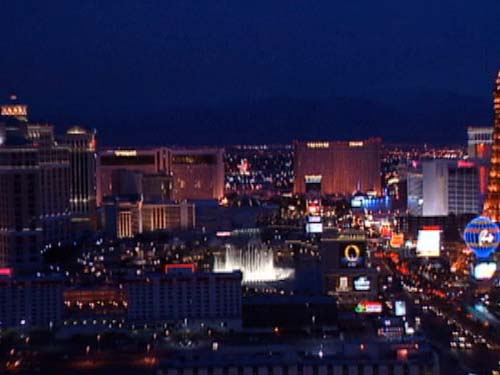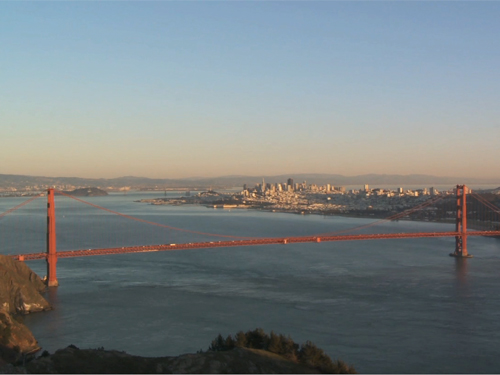Shimmering from the desert haze of Nevada like a latter-day El Dorado, Las Vegas is the most dynamic, spectacular city on earth. At the start of the twentieth century, it didn't even exist; at the start of the twenty-first, it's home to well over one million people, with enough newcomers arriving to need a new school every month.
Las Vegas is not like other cities. No city in history has so explicitly valued the needs of visitors above those of its own population. All its growth has been fueled by tourism, but the tourists haven't spoiled the "real" city; there is no real city. Las Vegas doesn't have fascinating little-known neighborhoods, and it's not a place where visitors can go off the beaten track to have more authentic experiences. Instead, the whole thing is completely self-referential; the reason Las Vegas boasts the vast majority of the world's largest hotels is that around thirty-seven million tourists each year come to see the hotels themselves.
Each of these monsters is much more than a mere hotel, and more too than the casino that invariably lies at its core. They're extraordinary places, self-contained fantasylands of high camp and genuine excitement that can stretch as much as a mile from end to end. Each holds its own flamboyant permutation of showrooms and swimming pools, luxurious guest quarters and restaurants, high-tech rides and attractions.
The casinos want you to gamble, and they'll do almost anything to lure you in; thus the huge moving walkways that pluck you from the Strip sidewalk, almost against your will, and sweep you into places like Caesars Palace. Once you're inside, on the other hand, the last thing they want is for you to leave. Whatever you came in for, you won't be able to do it without crisscrossing the casino floor innumerable times; as for finding your way out, that can be virtually impossible. The action keeps going day and night, and in this windowless – and clock-free – environment you rapidly lose track of which is which.
"Little emphasis is placed on the gambling clubs No cheap and easily parodied slogans have been adopted to publicize Las Vegas, no attempt has been made to introduce pseudo-romantic architectural themes or to give artificial glamour or gaiety."
– WPA Guidebook to Nevada, 1940
Las Vegas never dares to rest on its laurels, so the basic concept of the Strip casino has been endlessly refined since the Western-themed resorts and ranches of the 1940s. In the 1950s and 1960s, when most visitors arrived by car, the casinos presented themselves as lush tropical oases at the end of the long desert drive. Once air travel took over, Las Vegas opted for Disneyesque fantasy, a process that started in the late 1960s with Caesars Palace and culminated with Excalibur and Luxor in the early 1990s.
These days, after six decades of capitalism run riot, the Strip is locked into a hyperactive craving for thrills and glamour. First-time visitors tend to expect Las Vegas to be a repository of kitsch, but the casino owners are far too canny to be sentimental about the old days. Yes, there are a few Elvis impersonators around, but what characterizes the city far more is its endless quest for novelty. Long before they lose their sparkle, yesterday's showpieces are blasted into rubble, to make way for ever more extravagant replacements. The Disney model has now been discarded in favor of more adult themes, and Las Vegas demands nothing less than entire cities. Replicas of New York, Paris, Monte Carlo and Venice now jostle for space on the Strip.
The customer is king in Las Vegas. What the visitor wants, the city provides. If you come in search of the cheapest destination in America, you'll enjoy paying rock-bottom rates for accommodation and hunting out the best buffet bargains. If it's style and opulence you're after, by contrast, you can dine in the finest restaurants, shop in the most chic stores, and watch world-class entertainment; it'll cost you, but not as much as it would anywhere else. The same guidelines apply to gambling. The Strip giants cater to those who want sophisticated high-roller heavens, where tuxedoed James Bond lookalikes toss insouciant bankrolls onto the roulette tables. Others prefer their casinos to be sinful and seedy, inhabited by hard-bitten heavy-smoking low-lifes; there is no shortage of that type of joint either, especially downtown.
On the face of it, the city is supremely democratic. However you may be dressed, however affluent or otherwise you may appear, you'll be welcomed in its stores, restaurants, and above all its casinos. The one thing you almost certainly won't get, however, is the last laugh; all that seductive deference comes at a price. It would be nice to imagine that perhaps half of your fellow visitors are skilful gamblers, raking in the profits at the tables, while the other half are losing, but the bottom line is that almost nobody's winning. In the words of Steve Wynn, who built Bellagio and the Mirage, "The only way to make money in a casino is to own one"; according to the latest figures, 85 percent of visitors gamble, and they lose an average of $665 each. On top of that, most swiftly come to see that virtually any other activity works out cheaper than gambling, so end up spending their money on all sorts of other things as well. What's so clever about Las Vegas is that it makes absolutely certain that you have such a good time that you don't mind losing a bit of money along the way; that's why they don't even call it "gambling" anymore, but "gaming."
Finally, while Las Vegas has certainly cleaned up its act since the early days of Mob domination, there's little truth in the notion that it's become a family destination. In fact, for kids, it's doesn't begin to compare to somewhere like Orlando. Several casinos have added theme parks or fun rides to fill those odd nongambling moments, but only ten percent of visitors bring children, and the crowds that cluster around the exploding volcanoes and pirate battles along the Strip remain almost exclusively adult.




































